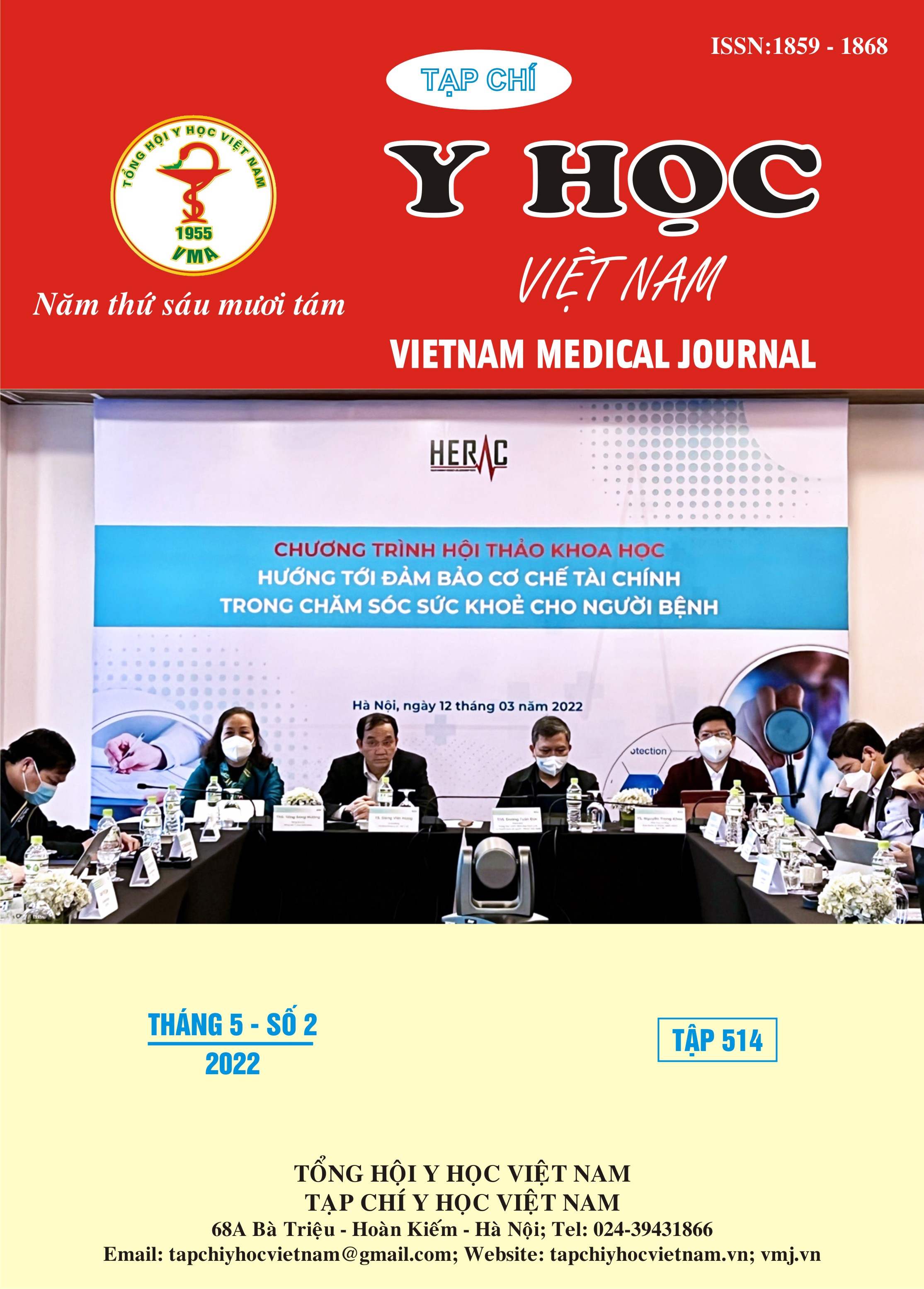CHARACTERISTICS OF ELEVATED OSMOL PRESSURE IN PATIENTS WITH ACUTE ETHANOL AND METHANOL POISONINGS
Main Article Content
Abstract
Objective: to assess the characteristics of osmotic pressure increased in patients with acute ethanol and methanol poisonings. Subjects and methods: A prospective observational study on 121 acute ethanol and methanol poisoned patients with elevated osmol pressure treated at the Poison Control Center, Bach Mai Hospital was conducted from 7/2019 to 7/2020. Results: Ethanol and methanol poisonings caused an increase in osmotic pressure; 54.4% of ethanol poisonings and 72.3% of methanol poisonings had severe increases in OG. The higher the concentration of ethanol and methanol in blood, the higher osmalar gap (OG) (p<0.05). OG on admission in methanol poisoning patients was higher than ethanol poisoning (80.7 ± 40.53 vs 48.5 ± 29.36; p <0.05); the time OG returned to normal was longer than that of ethanol (23.5 ± 8.69 vs 11.2 ± 4.24; p <0.05). The blood osmolality gap decreased rapidly after admission, whereas the anion gap increases. Methanol poisonings were more severe, developed more complications than ethanol and had a higher rate of mortality (66.7% and 2.9%; p <0.05). Conclusion: The evaluation in elevated osmol pressure in patients with acute ethanol and methanol poisonings is essential for early prognosis of complications and having treatments for the patients
Article Details
Keywords
osmolar gap, ethanol and methanol
References
2. Bộ Y Tế (2014), “Báo cáo chung tổng quan ngành Y tế năm 2014: Tăng cường dự phòng và kiểm soát bệnh không lây nhiễm”, Nhà xuất bản Y học, 5.
3. Kraut JA, Madias NE (2007), “Osmolar Gap”, Clin J Am Soc Nephrol 2:2007; 162-17
4. Michael Emmett, Biff F Palmer (2020), “Serum Osmolal Gap”, Uptodate Version 23, 2020.
5. Lee C.Y., Chang E.K., Lin J.L., et al (2014), “Risk factors for mortality in Asian Taiwanese patients with methanol poisoning”, Ther Clin Risk Manag, 10, 61-7.
6. Hovda K. E., Hunderi O. H., Rudberg N., et al (2004), “Anion and osmolal gaps in the diagnosis of methanol poisoning: clinical study in 28 patients”, Intensive Care Med, 30(9), 1842-1846.
7. Zakharov S., Nurieva O., Kotikova K., et al (2017), “Positive serum ethanol concentration on admission to hospital as the factor predictive of treatment outcome in acute methanol poisoning”, Monatsh Chem, 148(3):409-419
8. Nguyễn Đàm Chính và cs (2016), “Nhận xét kết quả điều trị bệnh nhân ngộ độc cấp methanol tại Trung tâm chống độc bệnh viện Bạch Mai”, Tạp chí nghiên cứu y học, 440(1),29-33.
9. Chang S.T., Wang Y.T., Hou Y.C., et al (2019), “Acute kidney injury and the risk of mortality in patients with methanol intoxication”, BMC Nephrol 20: 205.


